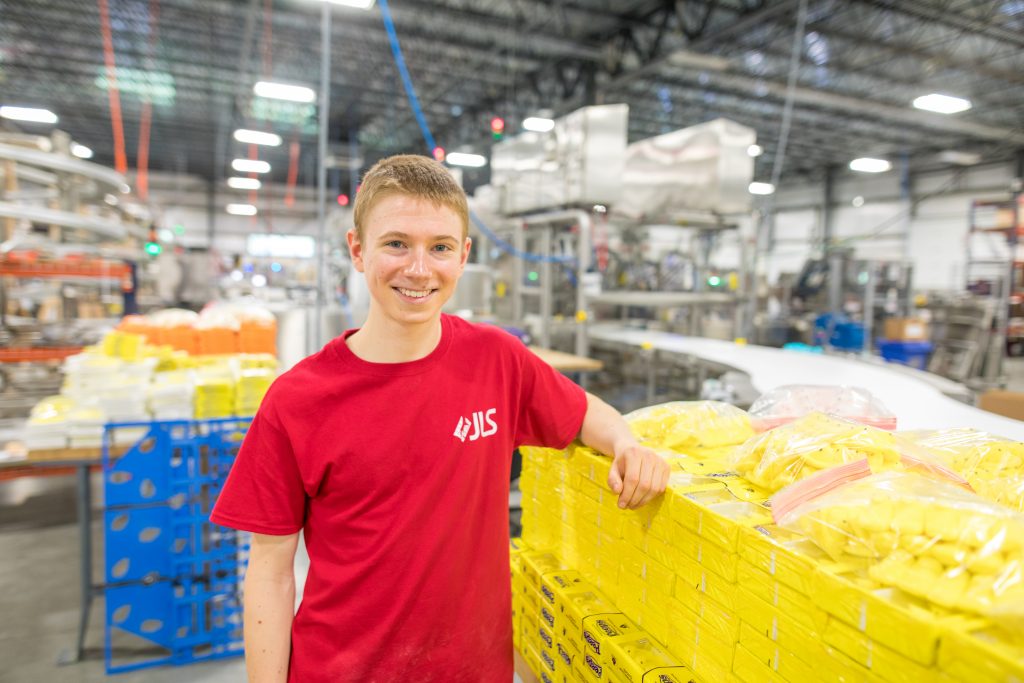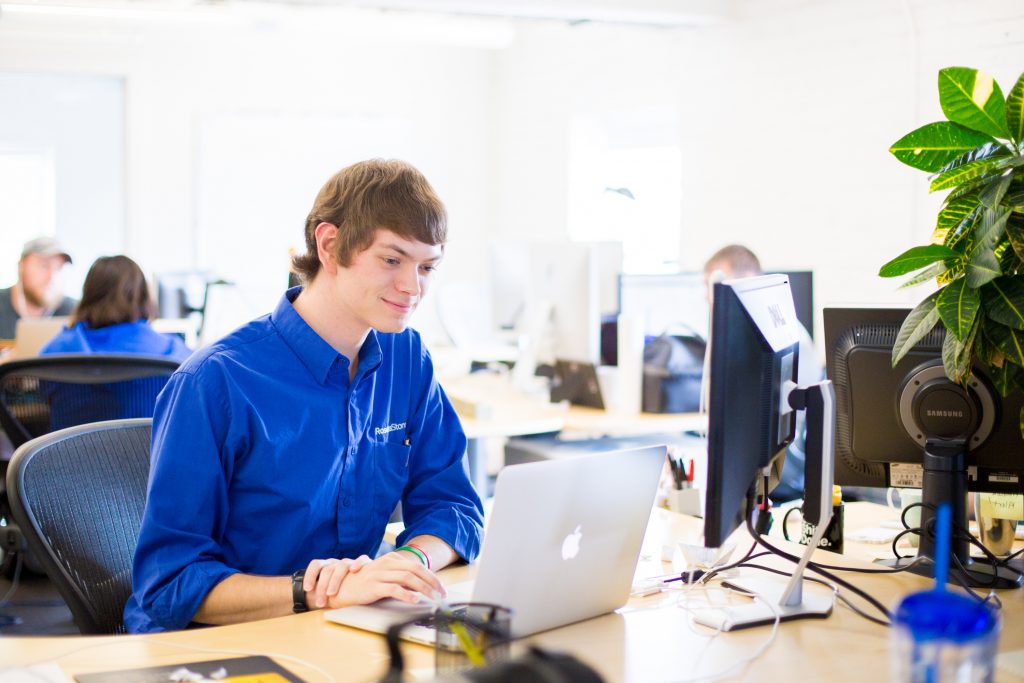Austin Engle ’20 and Ben Stutzman ’20 recently became inventors, successfully patenting the “Garbage Grader” they created while still students at Eastern Mennonite University (EMU).
The invention analyzes plates of food as they’re thrown out, and grades the diner on how much they wasted. Instead of capitalizing monetarily on the invention, Stutzman and Engle published on an open-access repository so that others can make their own Garbage Graders.


The project was the culminating requirement for their engineering degree. The duo are among the first graduates of the EMU engineering program. Engle is now pursuing a doctorate in computer science at the University of Virginia, and Stutzman is a software engineering intern with the company WebstaurantStore in Lancaster, Pa.
Professor Esther Tian called the experience of working with the duo “fulfilling.”
“It was definitely an extended learning opportunity for our students conducting patent search and reading patents in related fields,” said Tian. “The writing of a patent application is a lot different from that of a technical paper.”
Inspiration, design, and assembly
Engle and Stutzman were first inspired by a United Nations study which claimed that one-third of the world’s food is wasted.
“And that made us so angry that we decided we were going to attack that problem at its source – a small liberal arts college that’s already really good at not wasting: EMU’s cafeteria,” Engle joked.
They “considered” a few different ways they could convince cafeteria diners to waste less, like building a robot that eats those who don’t finish their food, or starting a pandemic to evacuate campus.
“Or we could build a Garbage Grader,” Engle said.
The system they built under the guidance of engineering professors Tian and Stefano Colafranceschi had several interdependent components. First, a camera mounted above the trashcan was constantly taking photos. A scale underneath, triggered by additional weight as food was dumped in, signaled to the camera to save the previous four photos, to capture an image of the plate just before it was cleared. Then, an artificial intelligence system they trained gave that photo a letter grade.

“And then, a few seconds later, a picture of their plate will appear on the TV screen over here along with a letter grade that tells them how wasteful their plate was,” Stutzman explained.
Training that artificial intelligence, or neural network, was the most challenging part of building the garbage grader. Engle and Stutzman recruited a team of 15 students and staff to process 15,000 photos of dirty plates, assigning letter grades to teach the network how to evaluate the plates itself.
“This was fun for the first 1,500 or so,” Engle quipped.
“It was a pleasure to brainstorm and work with Ben and Austin,” Colafranceschi said. “Machine learning is hot-topic and it was rewarding to see an original idea become an engineering prototype in just one year.”
But just when it was going so well …
After months of work planning, designing, and building this system, they installed the final piece – the television to show consumers their garbage grade – on March 8.
“We had a ton of fun sitting in a corner of the cafeteria and observing people from afar as they reacted to pictures and grades of their own plates,” Stutzman said.
Engle agreed. “It was magical watching everything that we had worked on for the entire year click and start working for the first time,” he said.
They had hoped to see whether being evaluated would make consumers change their behavior, and waste less over time. But of course, just days after they got the television up and running, EMU closed its campus and asked students to return home as the pandemic hit Virginia.
As a result, they didn’t gather enough data to see if diners’ behaviors actually changed.
“It was especially frustrating that the situation was out of our control, so we couldn’t just engineer our way out,” Stutzman said.
Even with that setback, they had still made a fully functioning invention. Now they hope other innovators will develop the tool and use it further to educate consumers.
As the young innovators have moved on to post-graduate work and studies, Stutzman said, “we’re trusting EMU students to eat responsibly without supervision!”

Fantastic work by all! This was very interesting and timely to me, as we are examining global food insecurity right now. Thank you for sharing your story and applying your brilliant minds (and senses of humor) to a very real problem. Bravo!